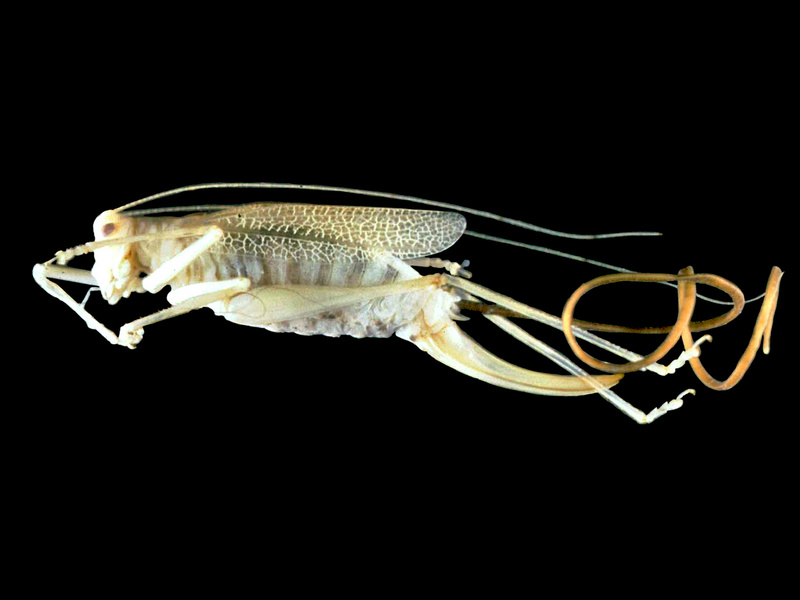Horsehair Worm (Phylum: Nematomorpha) - Wiki Nematomorpha
From Wikipedia, the free encyclopedia
[Photo] Spinochordodes tellinii and its grasshopper host. Spinochordodes tellinii aus seinem Wirt, der Eichenschrecke Meconema thalassinum, austretend (S??dfrankreich). Bildspende von D. Andreas Schmidt-Rhaesa, Ver??ffentlichung unter GNU FDL -- Necrophorus 15:30, 8. Sep 2004 (CEST)
Nematomorpha (sometimes called Gordiacea, and commonly known as Horsehair worms or Gordian worms, Korean name is 연가시) are a phylum of parasitic animals which are morphologically and ecologically similar to nematode worms, hence the name. They are, on average, 1 meter long, and 1 to 3 millimetres in diameter. Horsehair worms can be discovered in damp areas such as watering troughs, streams, puddles, and cisterns. The adult worms are free living, but the larvae are parasitic on beetles, cockroaches, grasshoppers and crustaceans. About 320 species have been described.
Nematomorphs possess an external cuticle without cilia. Internally, they have only longitudinal muscle and a non-functional gut, with no excretory, respiratory or circulatory systems. Reproductively, they are dioecious, with the internal fertilization of eggs that are then laid in gelatinous strings.
In Spinochordodes tellinii, which has grasshoppers as its vector, the infection acts on the grasshopper's brain and causes it to seek water and drown itself, thus returning the nematomorph to water. They are also remarkably able to survive the predation of their host, being able to wriggle out of the predator which has eaten the host cricket.
Relationships within the phylum are still somewhat unclear, but two classes are recognised:
Class Nectonematoida: Marine, planktonic, with a double row of natotory setae along each side of the body; with dorsal and ventral longitudinal epidermal cords, blastocoelom spacious and fluid filled; gonads single; larvae parasitise decapod crustaceans
Class Gordioidea: Freshwater and semiterrestrial; lack lateral rows of setae; with a single, ventral epidermal cord; blastocoelom filled with mesenchyme in young animals but becomes spacious in older individuals; larvae parasitise grasshoppers and crickets
http://en.wikipedia.org/wiki/Nematomorpha
| The text in this page is based on the copyrighted Wikipedia article shown in above URL. It is used under the GNU Free Documentation License. You may redistribute it, verbatim or modified, providing that you comply with the terms of the GFDL. |
